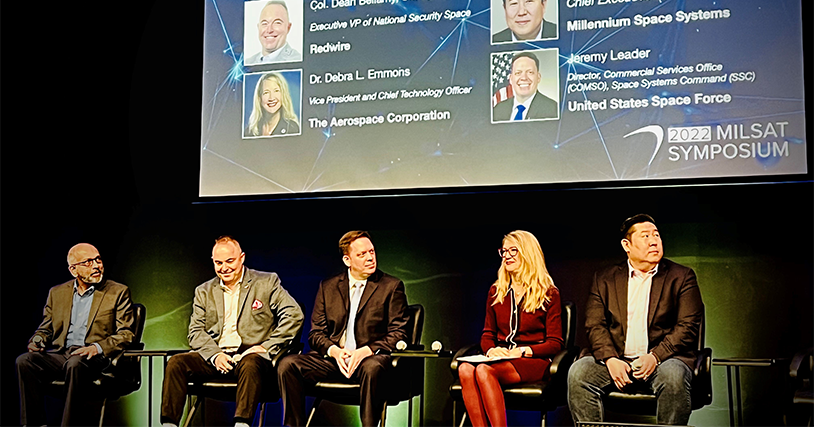
This year’s MilSat Symposium, held during Silicon Valley Space Week, was a prime opportunity for the Hughes team to present our latest insights and meet with other thought leaders across multiple fields and sectors. What’s become increasingly clear for all of us in the satellite industry is that no single company can do it all; we must have partnerships to deliver reliable and secure connectivity to defense agencies.
Hughes has long operated in that vein, from our network of more than 450 nationwide service providers to our alliances with satellite owners and operators to our partnerships with aerospace innovators. The model also makes sense for the military; the DoD wants to be able to rely on companies with well-established partnerships that can streamline delivery of solutions and services to the battlefield.
Another important takeaway from Space Week: the need for speed. Faster, more efficient procurement processes and quicker deployments of emerging technologies—which can also be facilitated by partnerships.
In his keynote address, Dr. Derek Tournear, Director of the Space Development Agency (SDA) highlighted how the U.S. Space Force (USSF) is applying a “spiral development approach” with guidance from SDA to ensure effective and speedy delivery of services and capabilities under a Firm Fixed Price (FFP) contract. Using spiral development, USSF spells out a two-year delivery cycle for new satellite service capabilities with a requirement that contractors must recompete for the business.
“There is no greater risk than a monolithic solution,” Dr. Tournear explained, stressing that spiral development eliminates that risk.
This approach echoes what has long been a topic of discussion, from industry and government, that the procurement process should reflect the capabilities needed by government. Too often, Requests for Proposals (RFPs) outline the specific technologies that potential vendors must deliver, without regard to whether those technologies will support future needs. Instead, RFPs could ask vendors to address the capabilities they would deliver, enabling the government to avoid getting locked into a specific technology. The government can leverage smart software-based solutions for orchestrating diverse and redundant resources. That’s why many companies continue to invest in independent research and development to be able to demonstrate to DoD and others that a solution is ready for deployment.
Our approach at Hughes is to develop and vet technologies first on our own networks and then roll them out to support commercial customers. For example, Hughes developed the Terminal Management Agent (TMA), a ground-breaking software feature for smart network edge within a satellite terminal, to interconnect seamlessly with various satellite modems, regardless of manufacturer or satellite system. Utilizing Artificial Intelligence (AI) rules-engine technology, TMA overrides stove-piped systems to enable user access to diverse platforms from a single terminal. Our Hughes Network Management System (NMS) software -- now in use for a 5G deployment at a naval air base -- is another example which can be used for DoD enterprise management and control (EMC). Both TMA and NMS unlock true network resilience for defense networks. Proven technologies like these can be adapted easily for Defense networks, and with our well-established network of industry partnerships, Hughes can also meet the government’s need for quick and efficient service delivery.